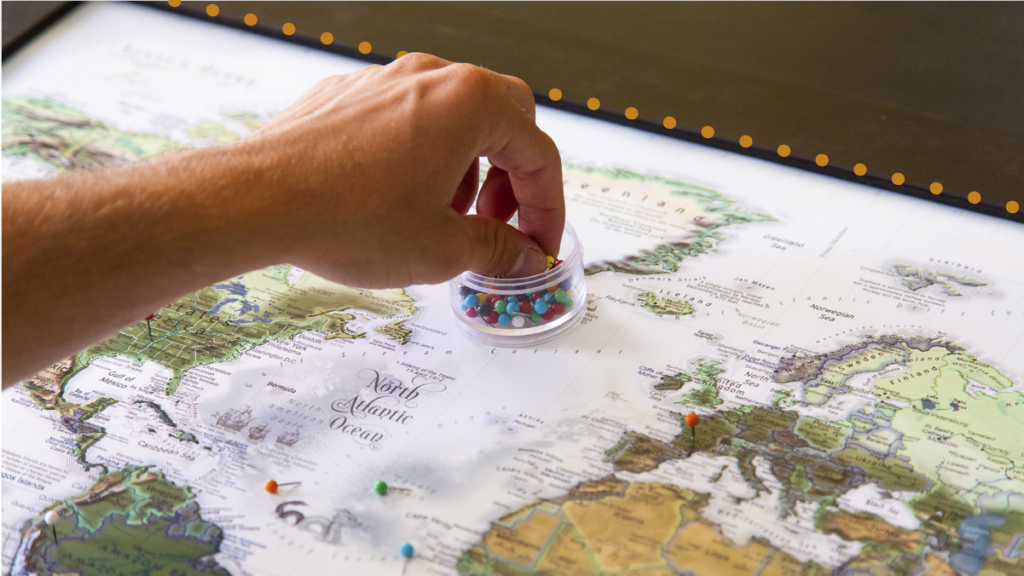Ultimate Guide to International Website Expansion

We worked our magic and prepared the essentials you need to know to go global
First, a confession: Sorry, we are not Harry Potter, and we do not have magic wands or flying broomsticks. However, we do have some aces up our sleeves to make your international website a roaring success.
Second, a quick tip: This topic is longer than it seems, so we recommend you also read the ultimate checklist for going global, to get a well-rounded idea of all the necessary elements for international business expansion.
Without further ado: Here is the guide we promised you.
Define the Right Strategy
There is more than one way to set up a “go global website”. Is your business going international, transnational, or will it be multi-domestic? We know it is a tricky question. Yes, they are all “international goals”, and they all seek website expansion. But they are not synonyms. So, let us rewind a bit, to highlight the differences between these approaches.
International Strategy
This is the case of businesses with head offices in their home country but focus on exportation, as most eCommerce or international websites for shopping do. Typically, there is only one site, which offers its content in multiple languages. Take Amazon.com, for example, which sells to anywhere in the world via international shipping and provides multilingual navigability.
Transnational Strategy
We refer to franchises. That is to say, companies with head offices in their home country that coordinate subsidiaries from there. They do not have just one global website, but rather one site per country, offering different content and adapting elements of their website menu and look-and-feel. Let us consider Starbucks as an example: Although similar, the site for the USA, Argentina, and England is not the same, because they have localised their elements.
Multi-Domestic Strategy
This points to companies relying on multiple sales and marketing strategies instead of a unique global plan, based on the specific markets in which they operate. Brands like Johnson & Johnson or L’oreal implement this approach: They tailor not only their strategies but also their products. Although this implies having multiple head offices and more than one international website, the brand voice always remains consistent.
Up to this point, you probably wonder what it has to do with the guide we promised or how this can be a handful for your business. To make it simple: We cannot help in your website expansion with just general tips. Your company has specific needs, depending on its goals.
Get a Well-Performer International Website
The following tips are essential for any type of global strategy. However, to implement them correctly, always keep in mind your international purpose and the course your business is taking. Identifying whether your approach should be international, specifically transnational, or multi-domestic will help you better understand when it makes sense to translate or localise, and how to do it properly.
- Do international research for trends: The choice of a new target country relies on market analysis to estimate the potential of the products in a given place, considering demand and competition. If you want your website to go global, remember to use tools such as Google Trends that allow you to research regional tendencies and improve your optimisation strategy.
- Get an idea of organic competition: Do a manual check of search results of the most important organic and paid keywords for the success of your international website. You can emulate local searches to predict results from places where you want to expand. Some tools can be useful, such as the Moz Bar extension.
- Be aware of technical SEO: Regardless of how you are managing the international business expansion, do not neglect the different aspects of SEO, especially the technical ones—to make the most of the work you have already done. For this, consider elements such as gaining backlinks from local reputable sites, optimising the HTML and Hreflang tags for the correct languages, etc.
- Test your marketing efforts: Before getting too ambitious, remember that the secret to success is to make testing a regular activity. Products change, people change, and we adapt. A global website will only keep attracting organic traffic if you do not take for granted your strategy. Start with an MVP and then evolve from their results.
#OptimationalTip: Although not compulsory, it could be a good idea to register your company to obtain local reviews. Google My Business and Yelp are great options, in case you consider doing so.
Final Thoughts: Define, Plan, and Test
Sorry, we have another confession. Creating an international website that is up to the expectations requires professional work to ensure a high-quality final result. And, as we told you, this is a topic that requires extended analysis. Thus, before setting up any plan, it becomes a must to define where you are standing, where you want to go, and in what time frame you aim to get there.
The good news is, that you do not need magic to make it happen. You just need the right services from experts to ensure good use of these tips.
Still wondering how to start? Contact us today. We have the language services your company needs to get your international website up and running.